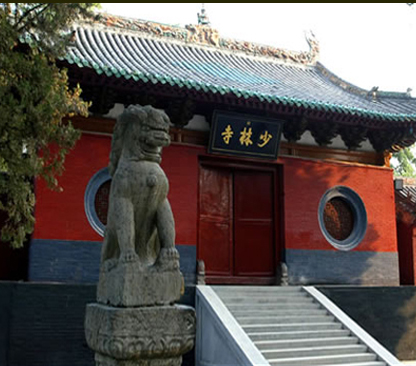Shaolin Temple

The Shaolin Temple is situated in the hinterland of Mount Songshan in Dengfeng City,Henan Province and amidst the dense forests at the foot of Shaoshi Hill,hence the name.As the Buddhist ancestral temple and the birthplace of Shaolin martial arts,the Shaolin Temple is famous both at home and abroad.In the Sui(581-618)and Tang(618-907)dynasties,the temple enjoyed a high reputation throughout the country,and after the mid Qing Dynasty,it gradually declined.Though it has experienced many ups and downs in the past ages,the Shaolin Temple has left a great number of cultural relics.Of them,the 400historical stone carvings over the past ages after the Northern Qi Dynasty(550-577),250brick and stone tomb pagodas from the Tang Dynasty to the Qing Dynasty,the Hall of Bodhidharma built in the Northern Song Dynasty(960-1127),the huge colored mural of 500 arhats of the Ming Dynasty,and the illustrative charts of Shaolin boxing and the mural of the 13 Cudgel Monks Saced Prince Qin of the Qing Dynasty are of high historical and artistic value.
Longmen Grottoes
About 13 km south of Luoyang City,Henan Province,the Longmen Grottoes is one of the three major treasure houses of the ancient Buddhist grotto art in China.Now the Longmen Grottoes has over 2,300 niches,over100,000 statues and many tablet inscriptions with a total of 300,000 words.THE Longmen Grottoes is well known both at home and abroad because of its large number of Buddhist statues,large scale,varied themes,meticulous carvings and rich connotations.With the most imperial statues of the Northerm Wei(386-534)and Tang dynasties,the Longmen Grottoes shows the typical dignified manner.The giant statue of Vairochana has an imposing air,displaying the highest sculpture art of the Tang Dynasty.The famous”20 Excellent Works of Longmen” with decent,graceful,unadorned and vigorous characters are the representatives of the calligraphy ot the Wei Dynasty.They occupy an extremely lofty plsition in the decelopment history of Chinese calligraphy.










